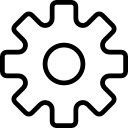






















Descrivere la panoramica architettonica di alto livello di SQL Server e le sue varie componenti.
Descrivere il modello di esecuzione, le attese e le code di SQL Server.
Descrivere i concetti fondamentali di I / O, gli Storage Area Networks e i test delle prestazioni.
Descrivere i concetti architettonici e le migliori pratiche relative ai file di dati per i database utente e TempDB.
Descrivere i concetti architettonici e le migliori pratiche relative alla concorrenza, alle transazioni, ai livelli di isolamento e di chiusura.
Descrivere i concetti architettonici dell'Optimizer e come identificare e risolvere i problemi legati al piano di query.
Descrivere i concetti architettonici, gli scenari di risoluzione dei problemi e le migliori practiche relativi al piano di cache.
Descrivere i concetti architettonici, la strategia di risoluzione dei problemi e gli scenari di utilizzo per gli Extended Events.
Spiegare la strategia di raccolta dei dati e le tecniche per analizzare i dati raccolti.
Conoscenza di base del sistema operativo Microsoft Windows e delle sue funzionalità principali
Conoscenza operativa dell'amministrazione e manutenzione di un database
Conoscenza operativa di Transact-SQL
Module 1: SQL Server Architecture, Scheduling, and Waits
SQL Server Components and SQL OS
Windows Scheduling vs SQL Scheduling
Waits and Queues
Lab : SQL Server Architecture, Scheduling, and Waits
After completing this module, you will be able to:
Describe the SQL Server components and SQL OS
Describe the differences between Windows Scheduling and SQL scheduling
Describe waits and queues
Module 2: SQL Server I/O
Core Concepts
Storage Solutions
I/O Setup and Testing
Lab : Testing Storage Performance
After completing this module, you will be able to:
Describe the core concepts of SQL I/O
Describe storage solutions
Setup and test I/O
Module 3: Database Structures
Database Structure Internals
Data File Internals
TempDB Internals
Lab : Database Structures
After completing this module, you will be able to:
Describe the internal setup of database structures
Describe the internal setup of data files.
Describe the internal setup of TempDB
Module 4: SQL Server Memory
Windows Memory
SQL Server Memory
In-Memory OLTP
Lab : SQL Server Memory
After completing this module, you will be able to:
Describe the components of Windows memory
Describe the components of SQL Server memory
Describe In-Memory OLTP
Module 5: Concurrency and Transactions
Concurrency and Transactions
Locking Internals
Lab : Concurrency and Transactions
After completing this module, you will be able to:
Explain concurrency and transactions
Describe locking
Module 6: Statistics and Index Internals
Statistics Internals and Cardinality Estimation
Index Internals
Columnstore Indexes
Lab : Statistics and index Internals
After completing this module, you will be able to:
Describe statistics internals
Explain cardinality estimation
Describe why you would use Columnstore indexes and be able to implement one
Module 7: Query Execution and Query Plan Analysis
Query execution and optimizer internals
Analyzing query plans
Lab : Query execution and query plan analysis
After completing this module, you will be able to:
Describe query execution and optimizer
Analyze query plans and resolve common issues
Module 8: Plan Caching and Recompilation
Plan cache internals
Troubleshooting plan cache issues
Query store
Lab : Plan caching and recompilation
After completing this module, you will be able to:
Describe plan cache
Troubleshoot plan cache issues
Describe query store and why you would use it
Module 9: Extended Events
Extended events core concepts
Implementing extended events
Lab : Extended events
After completing this module, you will be able to:
Describe the core concepts of extended events
Implement extended events
Module 10: Monitoring, Tracing, and Baselining
Monitoring and tracing
Baselining and benchmarking
Lab : Monitoring, Tracing and Baselining
After completing this module, you will be able to:
Describe various options for monitoring and tracing
Describe various options for benchmarking and baselining
Module 11: Troubleshooting Common Performance Issues
Troubleshoot CPU performance
Troubleshoot memory performance
Troubleshoot I/O performance
Troubleshoot Concurrency performance
Troubleshoot TempDB performance
Lab : Troubleshooting common performance issues
After completing this module, you will be able to:
Troubleshoot common performance issues